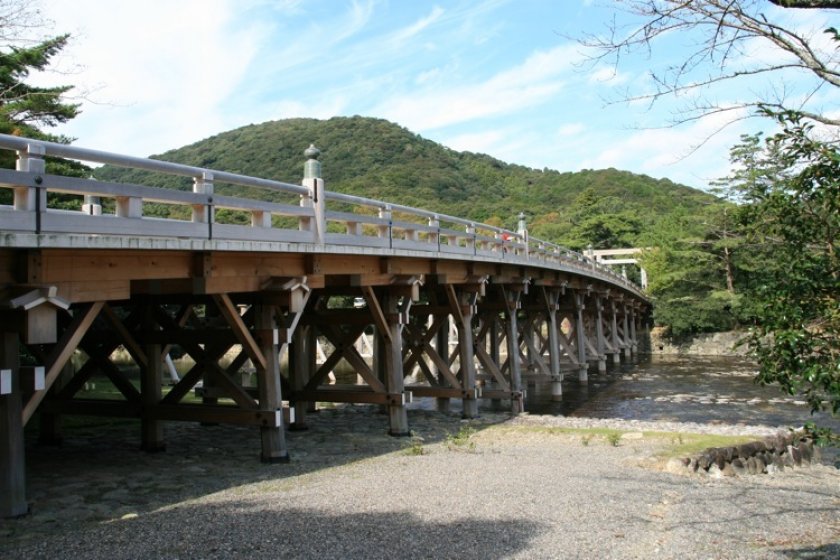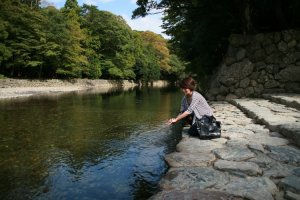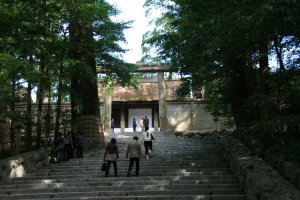The atmosphere is different. There is a spiritual calm that pervades and prevails. The air is clear and fresh, the only sound is that of the wind in the trees, the birds and insects, and the crunching of footsteps on the gravel lined path.
There is something magic about Ise Jingu, the holiest, and most important of all Shinto shrines and home to the sacred mirror, one of the three symbols of Imperial rule. It’s a calming, peaceful, soul-cleansing location removed from the modern world. The surrounding forests are filled with towering trees with enormous trunks testament to their age.

The Grand Shrine of Ise comprises two separate shrines, the Naiku and Geku. Separated by about six kilometers, the more important Naiku in the southern part of Ise City was founded over 2,000 years ago and is dedicated to the Sun Goddess, Amaterasu Omikami, one of the principal Shinto deities. The Geku, in central Ise City was established 1,500 years ago and worships the gods of agriculture and industry. 125 subsidiary shrines surround the main sanctuaries, and over 1,600 ceremonies are performed every year.
From ancient times, worshippers would visit the Geku first, then the Naiku. However, if time is limited, the older, more important Naiku is a must-see! Access to both shrines are limited, and the general public is admitted only as far as the outer walls of the inner shrine and are able to see little more than the thatched roofs of the inner shrine, hidden behind four high wooden walls. Even then, it is a moving experience to be present amongst the revered shrines.
The pristine forests of the Ise Shrine cover about a third of Ise City, or about 5,500 Hectares. The main shrines, the Naiku and Geku are situated within 90 Hectares of the ancient untouched forest. The outer woods of Japanese cypress are used to supply the timber required for the rebuilding of the shrines.

The shrine buildings at Naiku and Geku, and the Uji Bridge are rebuilt every 20 years, alternating on sites adjacent to the current location. This is done following the Shinto beliefs regarding death and renewal of nature, and the impermanence of all things. For this reason, despite its 2,000-year history and culture, Ise Jingu will never attain World Heritage status. It also means that the special “Miya Daiku” traditional carpentry skills are preserved, as preparation for the next rebuilding begins almost as soon as the previous shrine is destroyed.
When visiting the shrines, the procedure for worshipping is to approach the shrine quietly. If you wish to make an offering, toss your coin into the alcove or offertory box. Bow deeply twice. Clap your hands together at chest height twice. Bow your head slightly, with your hands together and eyes closed. When complete, bow deeply once again.
At Ise Jingu, you’ll feel the history, you’ll feel the awe-inspiring atmosphere, you’ll feel renewed, and you’ll feel as though you’ve seen something important, something special during your time in Japan.































